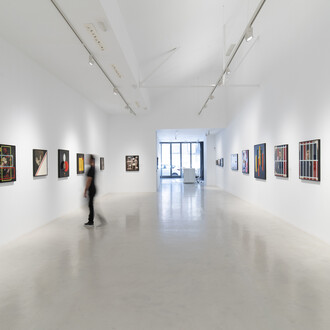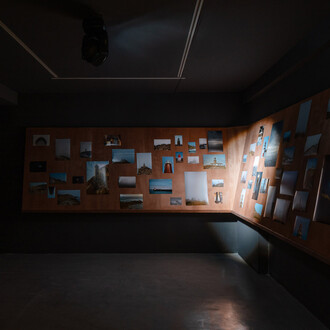Galería Hilario Galguera Madrid is pleased to present Vivisystem, an exhibition by British artist Mat Collishaw that explores the intersection between biology, technology and art. Inspired by the way living and artificial systems intertwine and evolve together, Collishaw immerses us in an unsettling and provocative visual universe. Through paintings, tapestries and animatronic sculptures, the artist investigates the integration between nature and machine in a world where artificial intelligence replicates biological structures, Vivisystem raises essential questions about the present and future of our relationship with life itself.
…Nature has all along yielded her flesh to humans.
First, we took nature’s materials as food, fibres and shelter.
Then we learned to extract raw materials from her biosphere to create our own synthetic materials.
Now bios is yielding us her mind - we are taking her logic…(Out of control: The new biology of machines, social systems and the economic world. Kevin Kelly)
What occurs when artificial systems begin to emulate the natural world, mirroring the flawless mathematics found in biology, such as fractals and Fibonacci sequences? The artworks in Vivisystems explore the interdependence that marks the convergence of technology and biology and the ways in which they can continuously evolve. The term vivisystem was coined by American writer Kevin Kelly to describe the phenomenon where machines increasingly mimic biological patterns, while human thought processes become more mechanised, creating a complex feedback loop. Vivisystems are all around us: the complex data pathways of AI and the Internet could be likened to the neural pathways of the human brain, just as we picture the fungal pathways between roots as organic modems, channelling information between trees in a forest one data point at a time.
Across Mat Collishaw’s paintings and tapestries, a series of floral arrangements presents a vision reminiscent of Old Dutch Master flower paintings. However, closer inspection reveals a nightmarish warping – dead beetles scattered like bullet-shaped memento mori, and flowers that are metamorphoses of insects. Butterflies appear fused into the plants in a vivisectional nightmare. Colours veer into unnatural vivid blues, and unopened tulips suggest pale forms of cave-dwelling insects and human flesh. The configurations seem endless, balancing between the profane and the sublime. Similarly, Collishaw’s animatronic stag, Insilico, is brought to life via a live online feed, whereby it reacts to the intensity of abuse directed to selected individuals on Twitter (now X), an intravenous dose of data.
Data is another key element in these new works – printed on a Jacquard loom, Collishaw’s tapestries combine one of the earliest industrial processes with one of the most advanced: the punch cards used to automate weaving patterns would inspire Ada Lovelace and Charles Babbage in their pioneering work in computer programming. In this light, one could argue that these Jacquard tapestries of the early 1800s were the world’s first digital images, as each pattern on the card corresponds to an individual loop of yarn in the weave: a pixel.
Unlike the more traditionally-sized paintings, Collishaw’s tapestries loom large and the floral arrangements swell in size until they are uncomfortably human-sized, their flesh-like appearance all the more disconcerting, as if one were looking at flaccid bodies floating in the vitrines of some illicit gene-sampling laboratory.
As biology and technology continue on their crash collision course, so too the ethics slip and slide, trying to find a foothold amongst the relentless experimentation. Collishaw’s memento mori offer a stark warning: just because we can, should we? Beware, for human aspiration is flawed. What might all this experimentation unleash? Upon reflection, perhaps the bright light illuminating these flowers isn’t the clear, calm daylight of a halcyon 17th century morning, but rather the harsh white light of a laboratory. Are we looking at the shiny fruits of a new Utopia, or the corrupt harbingers of Yeats’ blooddimmed tide, some rough beast slouching off to Bethlehem to be born?
(Text by Anna Wallace - Thompson)














